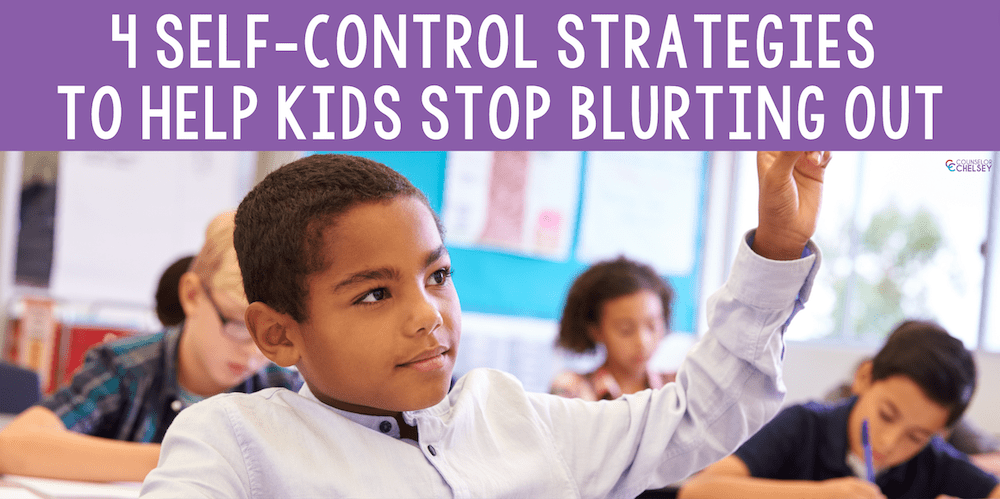4 Self-Control Strategies To Help Kids Stop Blurting Out
Students blurting out in the classroom can be frustrating. Whether the student is talking during independent work time, or forgetting to raise his/her hand during a classroom lesson, this lack of self-control can inhibit learning. These 4 interventions will help you support your students as they work to control their blurts.
1.Teach About What Kids Should Do
Kids may know that they shouldn’t blurt out in class, but do they know what they should do instead? When students know what is expected of them, it’s easier for them to act on those expectations. It’s important to be as specific as possible.
When talking about blurting out, it can be helpful to show the students exactly what they should do when they have something to say. Then, invite them to model the behavior themselves. If they should raise their hand, is it okay for them to wave it wildly in the air? Can they talk as long as their hand is raised? Being as clear as possible will help them better understand and execute the expectations.
2.Talk About When It’s Okay To Blurt Out
While it’s a general expectation to be quiet during a lesson, it’s also helpful if students let you know about emergencies or other situations that need to be dealt with quickly. This ambiguity can be tricky for kids to navigate, especially for our students who think everything is an emergency. This is another area where kids need clear expectations - they need to know exactly what to do, and when to do it.
Once you talk about when it’s okay to blurt and when it’s not, help the students practice deciding whether or not they should blurt. You can role play different situations, or give examples of what they may experience. Here are a few ideas:
Your friend is answering a question, but she’s wrong. You want to tell everyone the right answer.
You see someone fall in the hallway and they can’t get up.
You are going to throw up.
For extra clarity, try using a chart or visual aid like the one pictured on the right that is part of my “blurt control” activities.
3. Have Students Self-Monitor Their Blurting
One effective way to help students increase positive behavior is self-monitoring. Self-monitoring is the act of observing and documenting one’s own behavior. For students who blurt out, it can be helpful to have them record the number of times they blurt out during a given time.
This can be as easy as giving the student a post-it note and having them make a tally mark each time they blurt out instead of raising their hand. Kids can then track their progress and/or set goals for the number of “blurts” they will have in a given amount of time. Self-monitoring is a great strategy that helps the student become more aware of their behavior, and provides helpful feedback on their progress.
4. Provide Positive Reinforcement For A Raised Hand
When we’re asking a kid to raise their hand and wait to be called on, we are asking them to delay gratification - to use self-control now so that they can share what they want to say later. Even though this is hard (for kids and adults!) recent research has shown that when kids trust that they will eventually receive their desire, it’s easier for them to wait. An easy way to apply this to students who blurt is to call on them when they raise their hand (or exhibit the desired behavior).
If students who struggle with blurting out are instructed to raise their hands, but then are still not given an opportunity to share their thoughts, they may be less likely to do this in the future. They may instead be learning that the only way to be heard is to blurt out. Help students develop the habit of raising their hands by rewarding this behavior through making sure that you call on them. Another way to give students the positive reinforcement of getting to share their thoughts is by having the students write their thoughts down on a sticky note or a piece of paper. Then, at a more appropriate time, you can have the students share what they wrote down with you or the class.
Helping students learn to control their blurts can be easier with the right interventions and strategies. Clear expectations, self-monitoring, and positive reinforcement are great ways to get your students raising their hands when they want to share their amazing ideas. If you’re looking for a little more support with this topic, don’t forget to grab these blurt control activities that include an activity, visual aid, data collection forms, and more!








